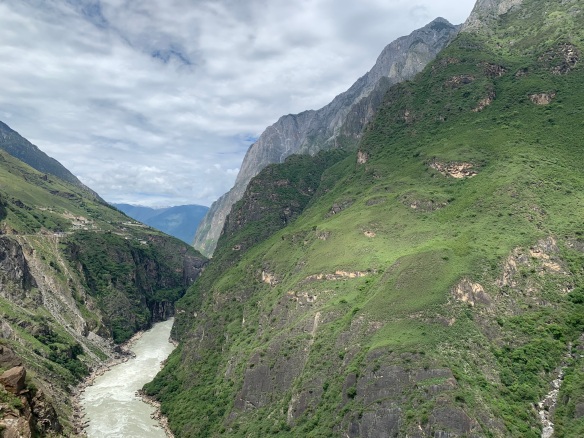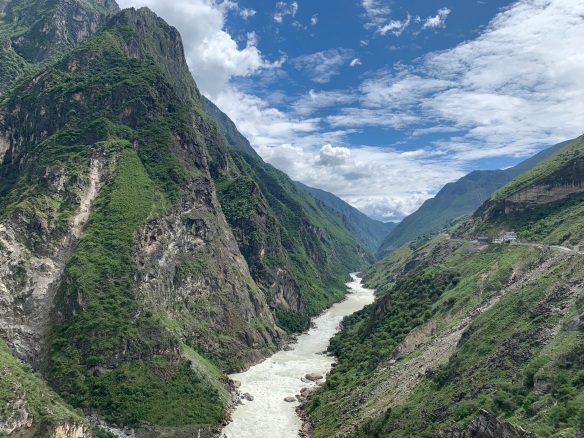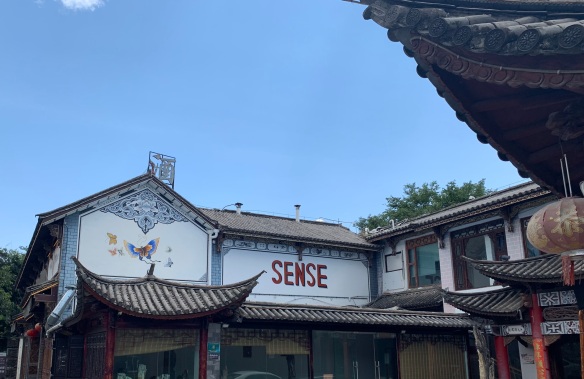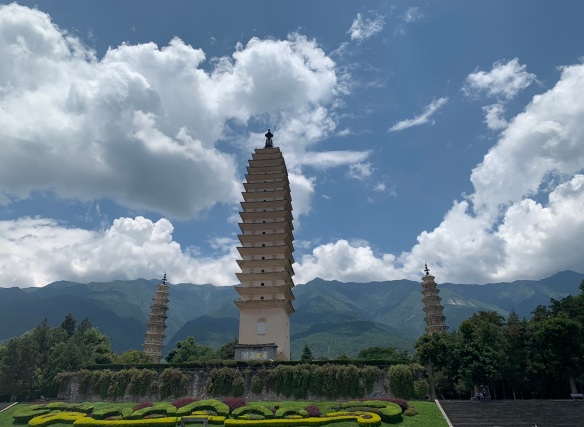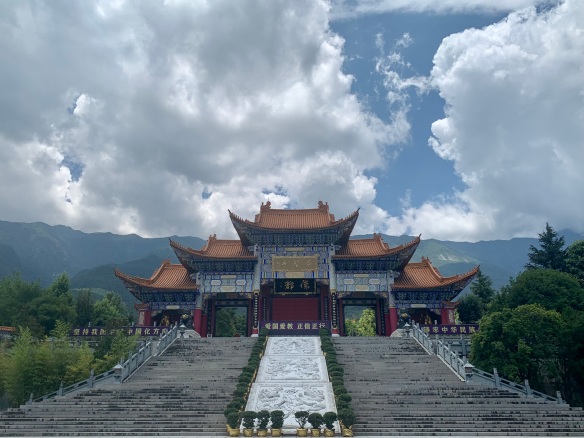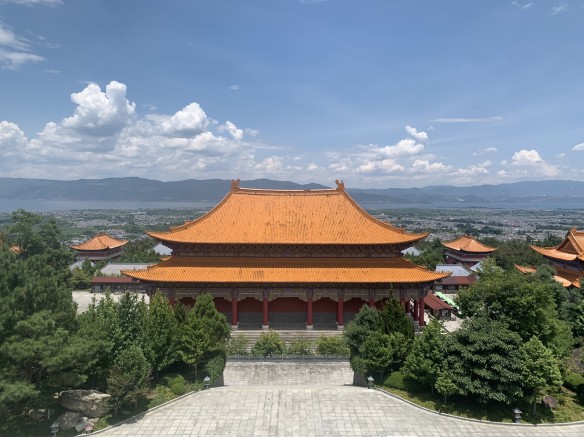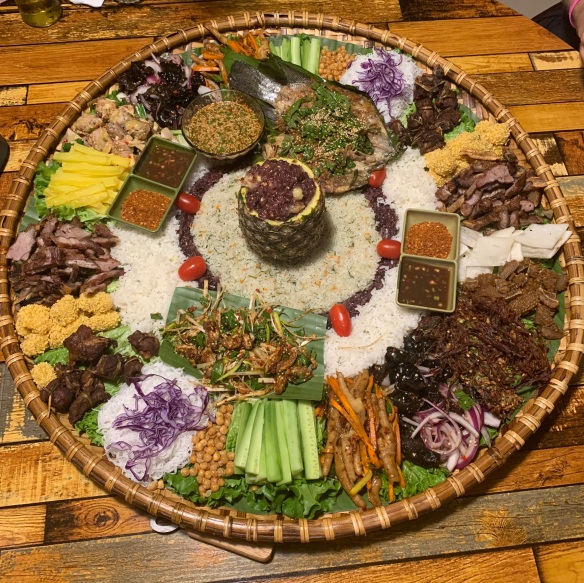
Was there any way for week two of Yunnan match the glory of the first? Well, you could add wine!
Week two’s itinerary was designed to be more off the beaten path, bringing us to wineries and villages you’d be hard pressed to locate on a map, before finally landing in (non-mythical) Shangri-La.

Wide-eyed at seeing foreigners, these gas station attendants requested selfies with us
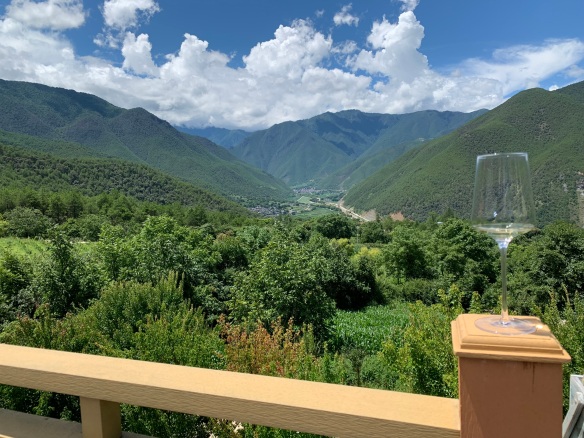
Hada Village winery.
We did drink more than wine. There was also yak butter tea, a salty (yep) brew favored by the Tibetans.
And in Hada village we helped make soy milk and tofu at a local family’s house, followed by a meal of said tofu, plus pork from their ham shed.
Tired of cured pork? Too bad! In Tongle, after our guide’s passionate presentation about his Lisu minority culture, we feasted on ham leg stew, cooked for four hours.

Road to Tongle

The village has been perched on this mountainside for some 300 years

Mountainside farming
Tongle was our lunch stop en route to Cizhong, along the Mekong River. People here are ethnically Tibetan and some 80% are practicing Catholics. Well, Catholic with heavy influences from Buddhism and significant oversight from the Chinese Communist Party.
We stopped by this church before dinner at the local winemaker’s house. When the priest invited us to return later that evening for a service, one of my tour group members solemnly said, “I don’t think it would be appropriate for us to attend service after we’ve been drinking.” The sound that came from me can best be described as a snort-laugh-bark. I mean, I get that the Catholic Church is different in China but I doubt it’s that different.
Underlining the cozy relationship between booze and “the one true faith” is the village’s history. They make wine for the same reason they have Catholics: French missionaries, bringing grapes and religion in the mid-1800s.
In the late 19th century this particular variety (of grapes, not religion) was wiped out in France by phylloxera, leaving a far-flung Chinese vineyard as the only place in the world still making wine from “Rose Honey” grapes. A drinkable, jammy red.
Thankfully, despite wildly generous pours at the winemaker’s house, I survived the next day’s activity: a stomach-churning dirt road jeep ride to the remote village of Yubeng.
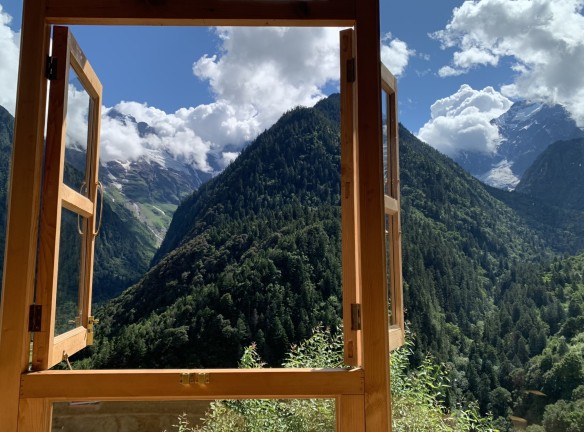
Hotel views even better than Tiger Leaping Gorge’s?
Yubeng is the base for a hike to a sacred Tibetan waterfall/pilgrimage site and while the village is only accessible via dirt roads, the hiking path to the waterfall is paved to make it easier for the faithful.
When you hear “paved hiking path” you maybe think, “how hard can that be?” But when the trek starts at 9,840 feet (3,000 meters), plunges straight down into a valley and then back up to nearly 12,000 feet (3,657 meters), the answer is, “pretty fucking hard.”
We had two nights here and some eager beavers opted to hike the afternoon of day one. I prefer early mornings and solitude and no pressure to return in time for dinner, so I awoke early on day two and, fortified with coffee and energy bars (ok, they were Snickers) and the audiobook of Lost Horizon, began my long march.
I really couldn’t have asked for a pleasanter time. It was cool and peaceful, with few others on the path that early. I only encountered crowds on my return, when I was basking in the glow of already having reached the goal they were still striving towards. There must be a German word for that feeling.

Lower Yubeng, seen from upper Yubeng

At the base of the waterfall
Sadly, not everything survived the trek.
After hikes on five continents…
Good thing our last few activities, like tasting the offerings at a Tibetan family owned winery, required no rugged gear.
Having finished Lost Horizon and driven through prayer flag-festooned landscapes for days, I was ready to hit our final stop of Shangri-La.
Shangri-La is capital of the “Diqing Tibetan Autonomous Prefecture of Yunnan.” Formerly called Zhongdian (Chinese) or Gyalthang (Tibetan), it became “Shangri-La” in 2001, in a bid to take advantage of the notoriety of the mythical city.
Some people told me this region is even more “Tibetan” than Tibet, where Han colonization has been more deliberate. Measured solely by yak manifestations, the Tibetan culture is indeed strong!
A beautiful monastery and ginormous prayer wheel are perched above old town.
A surprisingly popular activity among many Han tourists is to dress up as Tibetans or other minorities and take photos. Look, glass houses and stones when it comes to countries’ creepy relationship to people they’ve colonized. I am 100% sure you could find an American photo studio where random white folks snap pics while sporting a full Navajo headdress. Would I take such a photo myself? I would not. Can I hope that the minority community members in Shangri-La are price-gouging the hell out of their clients? I can.

Dress up photo shoot at the lamasery
Just outside of town is Ganden Sumtseling, the largest Tibetan Buddhist lamasery in Yunnan, dating from 1679. Our final sight and, other than Tiger Leaping Gorge, probably our only blockbuster must-see.

No pictures allowed inside the temples but the outside is spectacular
As enjoyable as blockbusters are, for me Yunnan wasn’t a place with a long checklist of must-sees. Yunnan was more about the overall atmosphere, with all of the history, minority cultures, nature…and the food and drink, natch.
I returned home relaxed and with a renewed love of China. Highly recommended! (Just skip ethnicity dress up hour).












































































